If you want to learn how to soften butter quickly without melting it, read on! I have forgotten to set out butter when I’m baking more often than I care to admit, and this easy hack has saved me every time! All you need is a stick of butter, a bowl, and some hot water. I also share a bunch of different ways to go about it if you want to try something different.
Many baking recipes call for softened butter, so knowing how to soften butter for baking will make a huge difference in how your baked goods turn out. Softened or room-temperature butter is required when you need to beat it to produce fluffy, light cake batters, cookie doughs, frostings, and more. I give you all of the tips and tricks you need to make sure your butter is at the perfect temperature for whatever you’re making! For more baking substitutes, check out my easy tutorials for how to make cake flour substitute, how to make powdered sugar, and how to soften brown sugar.
What You Need To Soften Butter in 10 Minutes
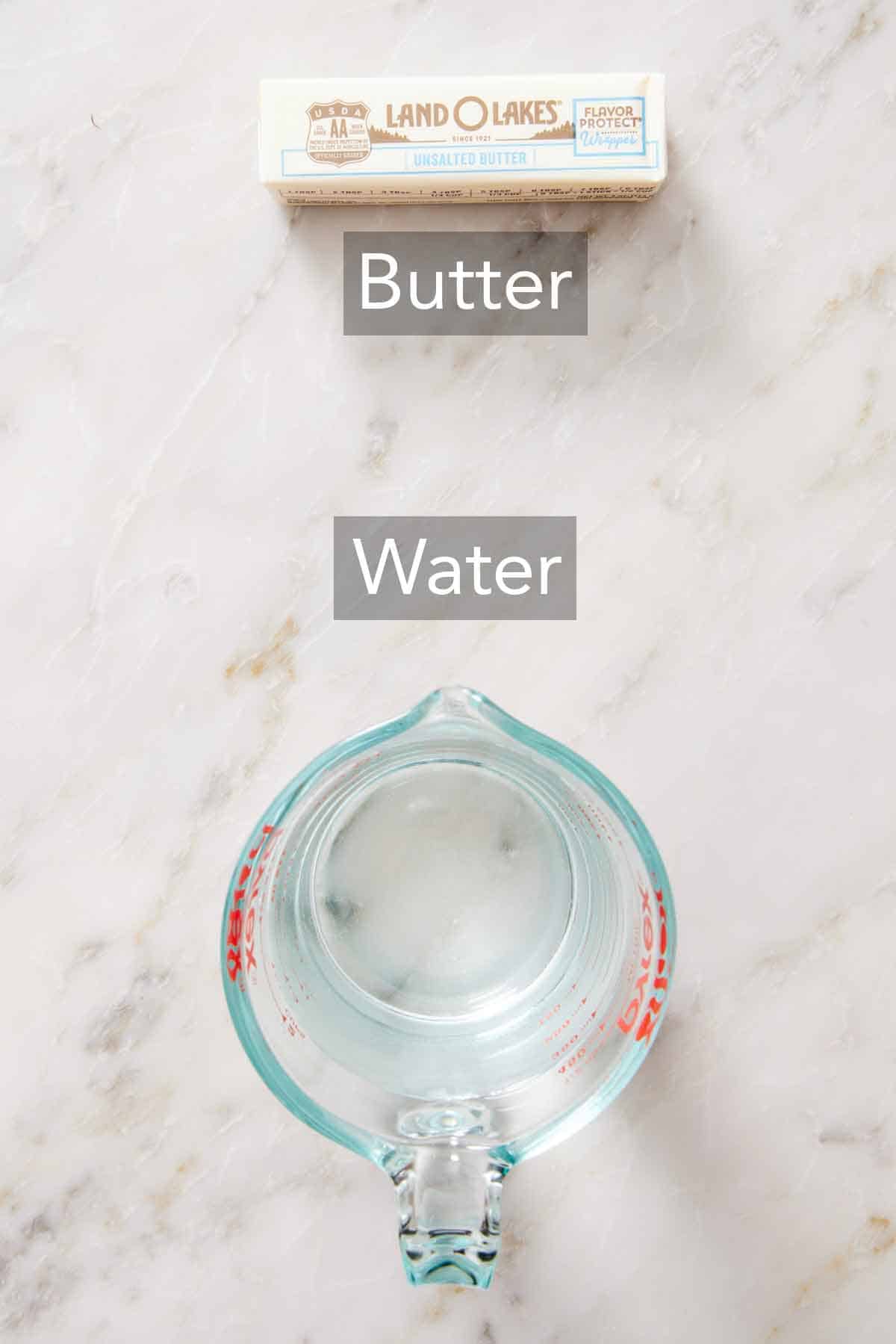
Butter — gather all of the butter you need to soften for your recipe. Use a whole stick (or sticks) and leave it in the wrapper.
Water — pour it straight from the tap into your bowl. Once heated, steam from the hot water is the key to softening butter quickly.
Glass Bowl — use a microwave-safe bowl that is large enough to easily fit on top of the butter.
How To Soften Butter Quickly
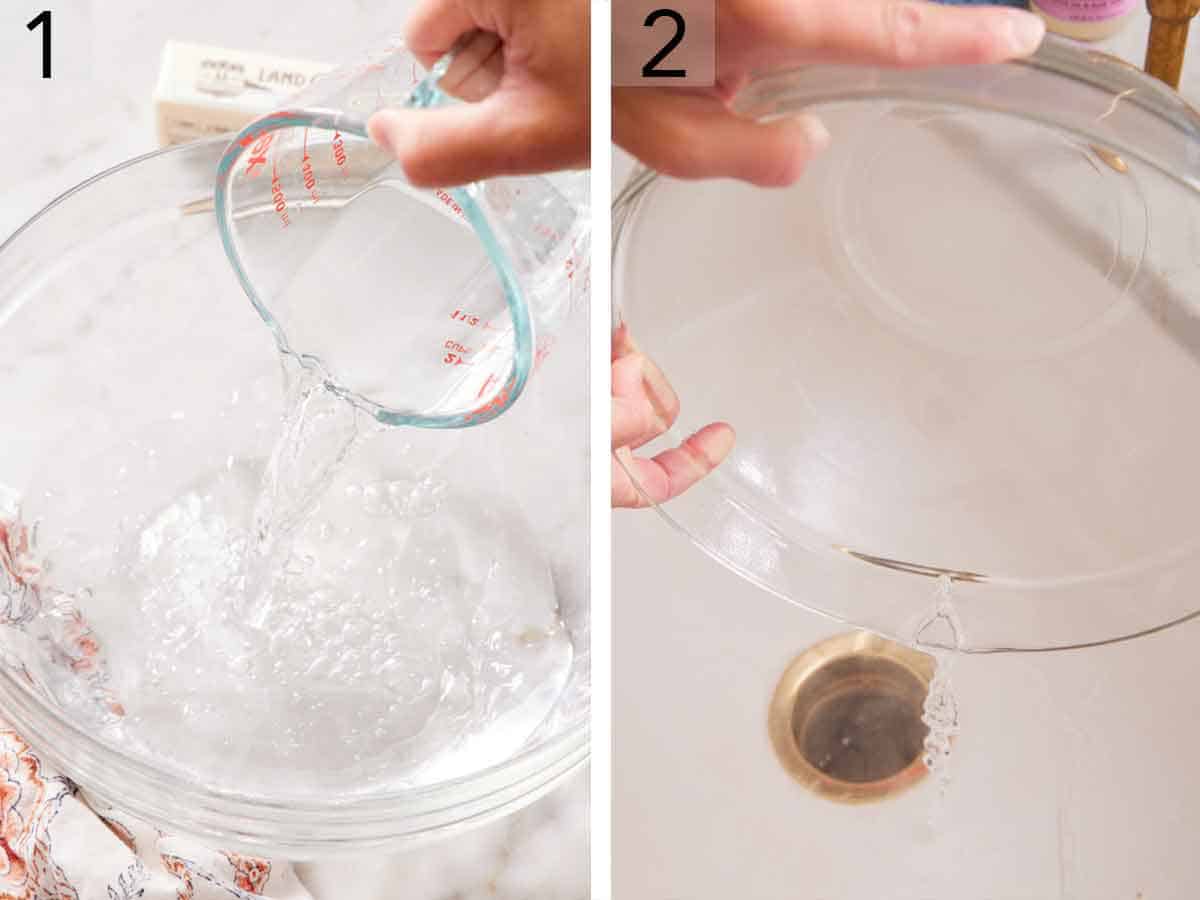
1. Pour 2 cups of water into a microwave-safe glass bowl. Microwave for 3 minutes until steaming.
2. Carefully pour out the water, keeping your face away from the steam.
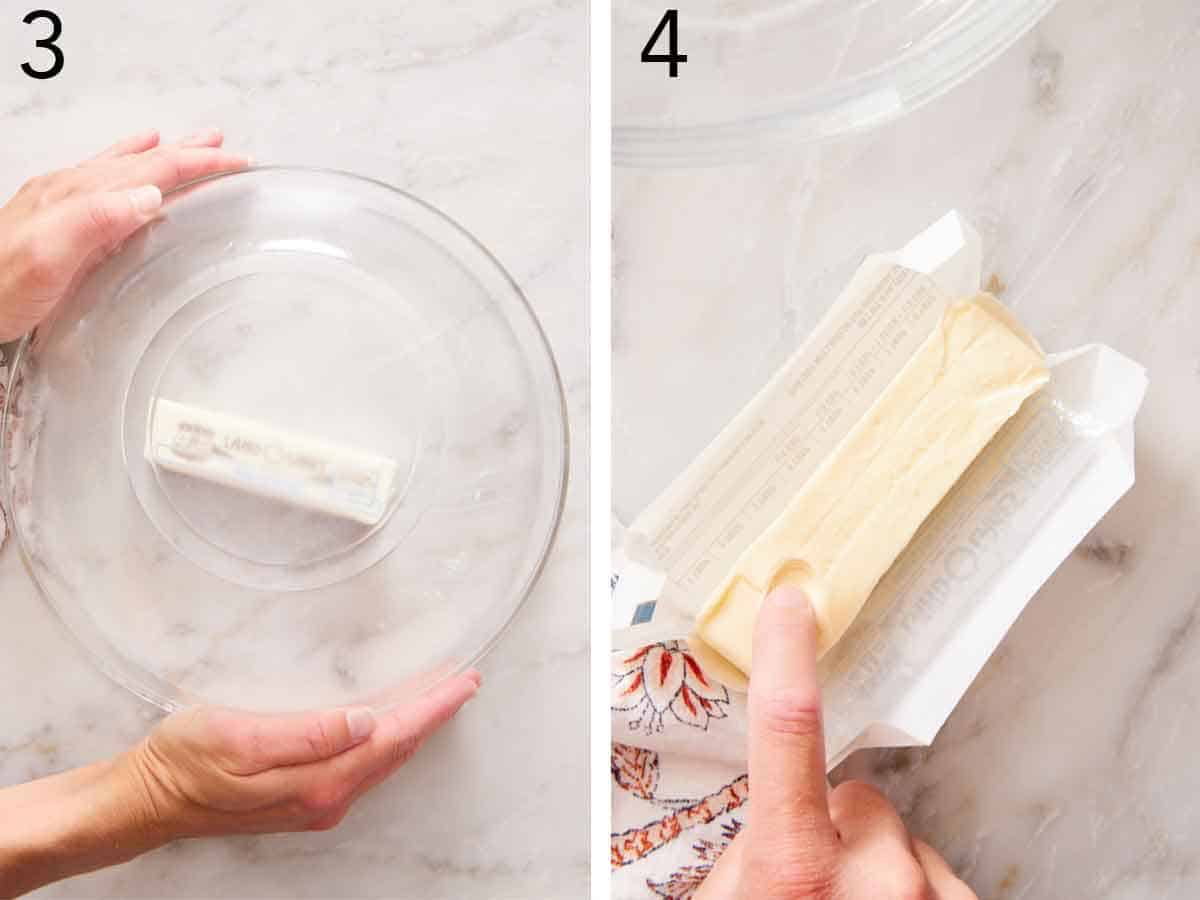
3. Keep the cold butter in its wrapper and set it on your counter. Quickly invert the bowl and place it over the butter so steam gets trapped.
4. Let the butter sit for 10 minutes, then remove the bowl. The stick of butter will be softened, which you can check by pressing a finger into the butter. If it leaves an indentation, but is still firm and quite cold to the touch, you are all set.
Why Softened Butter is Necessary
Softened butter is a key ingredient in many baking recipes, like chocolate chip cookies, white cake, and buttercream frosting. And while you may be tempted to use cold butter straight out of the fridge, hard butter won’t work in most recipes calling for soft butter.
Softened or room temperature butter is very often beaten with sugar (also known as creaming). While it is being mixed, the butter is able to trap air bubbles during the creaming process, which will expand in the oven and give you a fluffy, light baked treat.
If the butter is too cold, it will not mix well, the butter will not get light and fluffy, and your batter or cookie dough will not be cohesive. If the butter is too soft or melted, it won’t hold air as well, and you will likely get cookies that spread too much or cakes that fall flat.
How Soft Should Butter Be?
Butter is considered softened when you can pinch the stick or press a finger into it and it leaves an indentation but still gives some resistance.
The stick should not feel very oily or slick, and your finger should not go through the stick. Those are signs of too-soft butter, which needs to be cooled back down.
The general consensus is that softened butter should range from about 65°F to 68°F. You can check the exact temperature of your butter with an instant-read thermometer. But, to be honest, the indentation test works just fine!
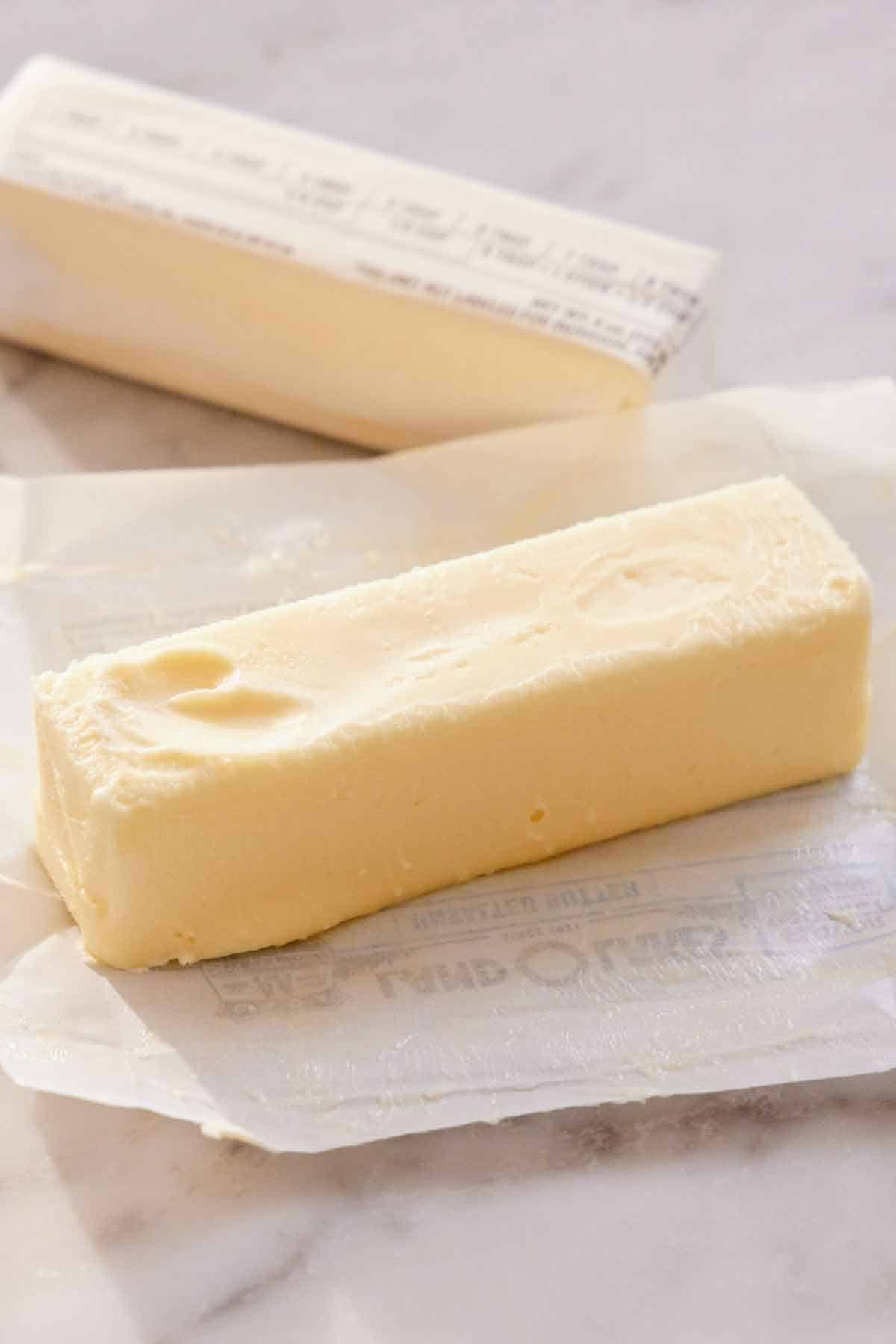
Other Methods for Softening Butter
The easiest way and best method to soften butter, if you aren’t in a time crunch, is to leave it out at room temperature for 30 to 45 minutes, depending on the temperature of your kitchen. (It is also okay to leave it on the counter overnight if you need it very soft or at room temperature.) Or, try one of these other hacks for quickly softening butter:
- How to soften butter by microwaving it: Place the unwrapped stick of butter on a microwave safe plate. Microwave at 30% power in 5 to 7 second intervals, turning the butter to sit on a different side after each interval. Repeat the microwaving and turning intervals until it is softened, about 20 seconds. Keep a close eye on the butter. It can go from soft to liquid in a flash!
- How to soften butter in the microwave (without zapping the butter): Fill a microwave-safe bowl with water. Microwave on high heat for 3 to 5 minutes until the water is boiling. Open the microwave and carefully remove the bowl. Quickly insert the stick of butter in the microwave and speedily close the door. Let the butter sit for 10 minutes to soften.
- Grate the Butter: If you are starting with a stick of frozen butter and the texture of grated butter will work for your recipe, grate on the large holes of a box grater, then let sit at room temperature for 10 minutes or until soft.
- Cut the Butter: Slice the butter into tablespoon-sized pieces or dice the butter into small cubes. Arrange it in a single layer and let it sit at room temperature for 15 to 20 minutes to soften. (It will soften faster in small pieces than in a large stick.)
- Use a rolling pin: Place the stick of butter between two sheets of parchment or waxed paper or in a zip-top plastic bag. Pound the stick with a rolling pin to flatten and soften. Remove the top piece of parchment or waxed paper. Use a bench scraper to scrape the butter off of the paper.

Pro Tips For Making This Recipe
- How to soften butter without a microwave: If you don’t have a microwave, boil water in an electric kettle or stovetop kettle. Pour the water into the heat-proof bowl and wait 1 minute to warm the bowl. Then, pour out the water and place the bowl over the butter to soften.
- Use room temperature ingredients in your baking recipe. Don’t forget to use room temperature eggs and dairy liquids (like milk, buttermilk, sour cream, etc.) alongside your softened butter when baking. Room temperature ingredients are easier to incorporate into a smooth batter and won’t cause your butter to firm back up during mixing.
- Use a warm glass: Instead of a bowl, you can use a tall, heat-safe glass jar or measuring cup and stand the stick of butter up instead of laying it on the counter.
- You can soften multiple sticks of butter. If you need to soften more than 1 stick of butter, just make sure your bowl is large enough to easily cover all the butter. Don’t stack the sticks of butter. Place them side by side for even, fast softening.
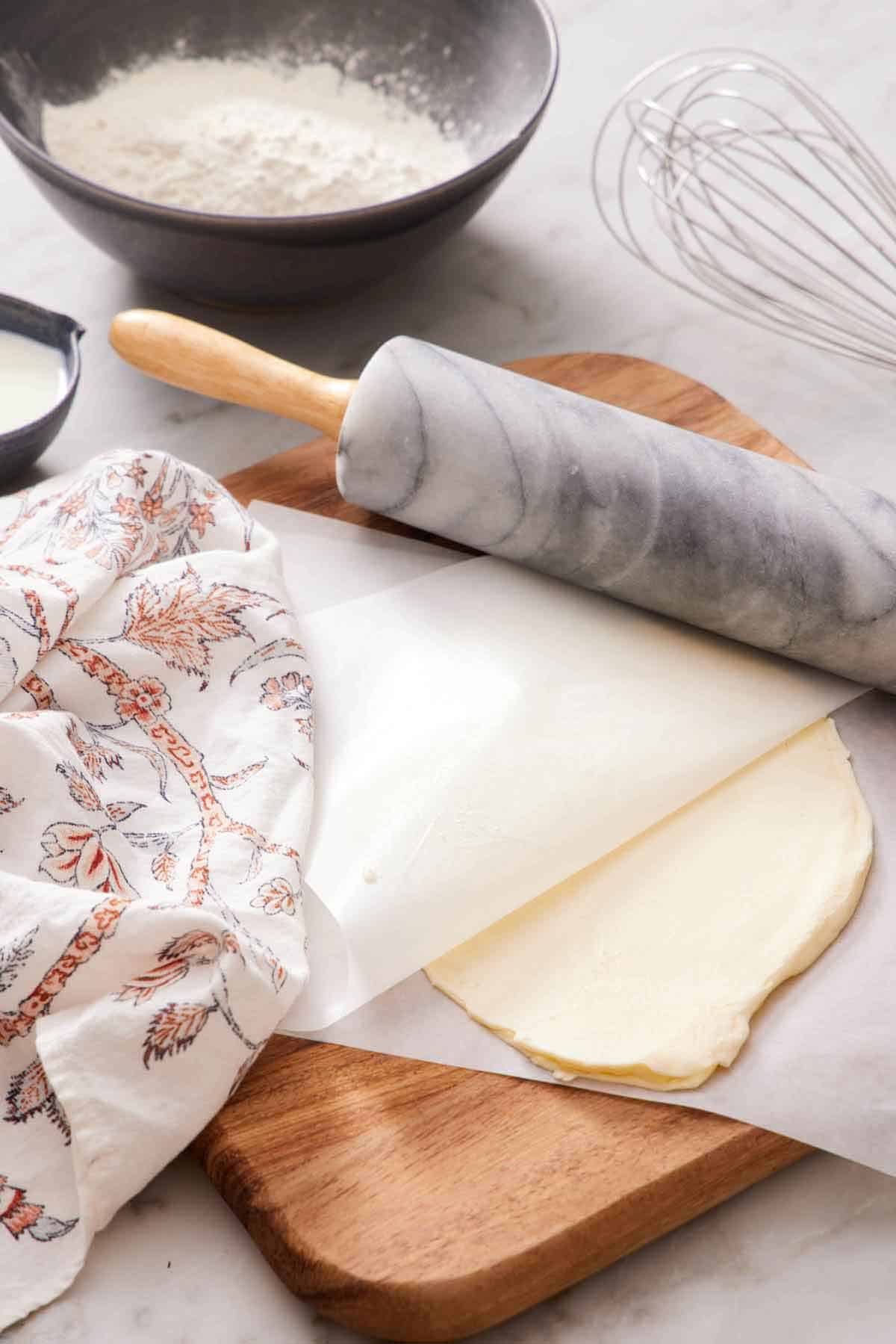
Frequently Asked Questions
It honestly depends on who you ask! Generally, if a recipe calls for softened butter or room temperature butter, it refers to the same thing: butter that is a little soft but still quite cold to the touch. In my recipes, I refer to room temperature butter as “very soft” or warmer butter (but not melted!).
“Room temperature” is generally accepted to be about 72°F which is warmer than you want for perfect “softened butter” (which is 65-68°F.) In my recipes, softened butter will generally work when room temperature butter is called for, and I note when it should be very soft.
Yes! But don’t turn the oven on with the butter inside it, or you will definitely end up with a pool of melted butter! Place the butter in the oven (!) and turn the oven light on. This takes about 30 to 45 minutes, so the same amount of time to naturally soften butter on your counter, but it’s a great trick if your kitchen is particularly cold.
Yes, if you don’t use all the softened butter, you can refrigerate it again. The butter will become hard and very cold, but you can use it whenever you need butter, cold, or soften it again.
If you’ve tried this tutorial for how to soften butter, then don’t forget to rate it and let me know how you got on in the comments below. I love hearing from you!
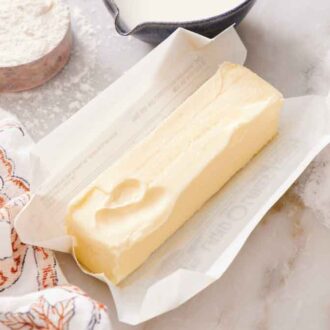
How to Soften Butter
Equipment
- Microwave-safe glass bowl
- 2 cup liquid measuring cup or pint glass
Ingredients
- 1 stick of butter
- 2 cups of water
Instructions
- Place 2 cups of water in a microwave safe glass bowl. Microwave for 3 minutes until steaming. Pour out the water.
- Keep the butter in its wrapper. Quickly place the empty bowl overtop of the stick of butter.
- Let the butter sit for 10 minutes, then remove the bowl. The stick of butter will be softened.
- (You can also boil water in a kettle on the stove and fill the bowl. Wait 1 minute to heat the bowl, then pour out the water and proceed with step 2).
Notes
- How to soften butter without a microwave: If you don’t have a microwave, boil water in an electric kettle or stovetop kettle. Pour the water into the heat-proof bowl and wait 1 minute to warm the bowl. Then, pour out the water and place the bowl over the butter to soften.
- Use room temperature ingredients in your baking recipe. Don’t forget to use room temperature eggs and dairy liquids (like milk, buttermilk, sour cream, etc.) alongside your softened butter when baking. Room temperature ingredients are easier to incorporate into a smooth batter and won’t cause your butter to firm back up during mixing.
- Use a warm glass: Instead of a bowl, you can use a tall, heat-safe glass jar or measuring cup and stand the stick of butter up instead of laying it on the counter.
- You can soften multiple sticks of butter. If you need to soften more than 1 stick of butter, just make sure your bowl is large enough to easily cover all the butter. Don’t stack the sticks of butter. Place them side by side for even, fast softening.



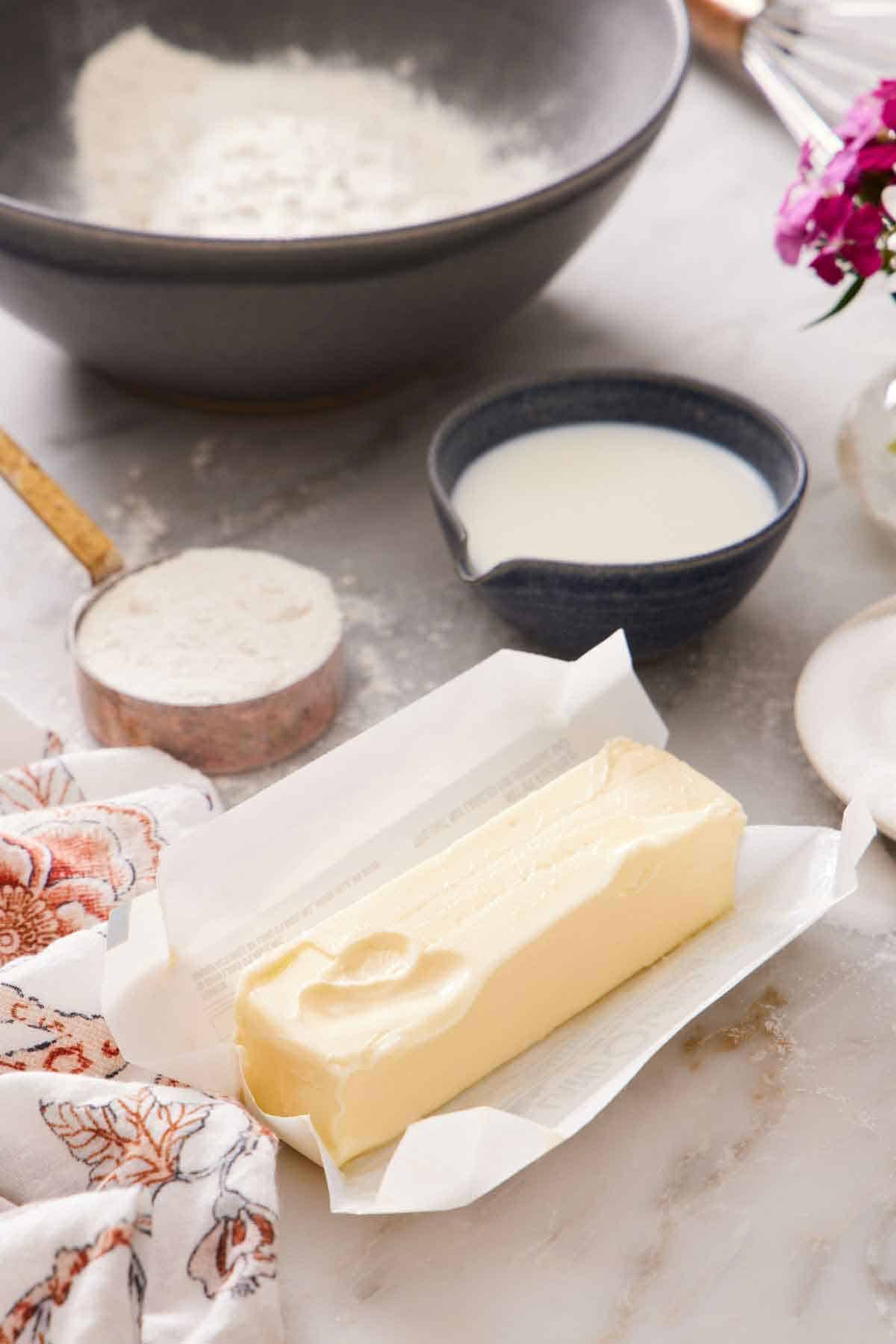





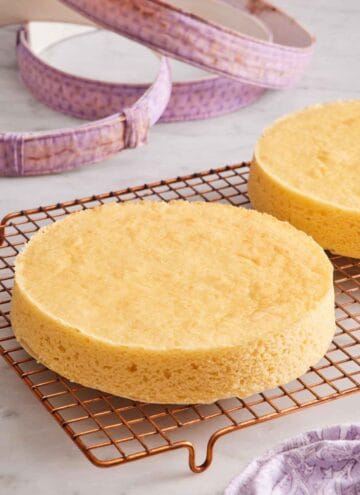

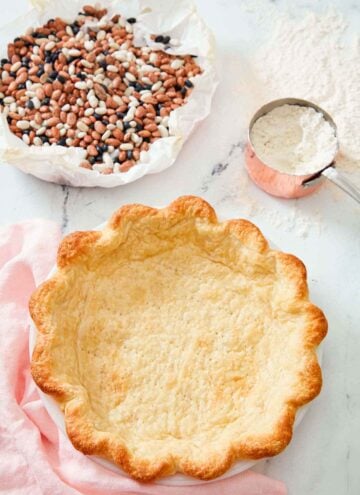
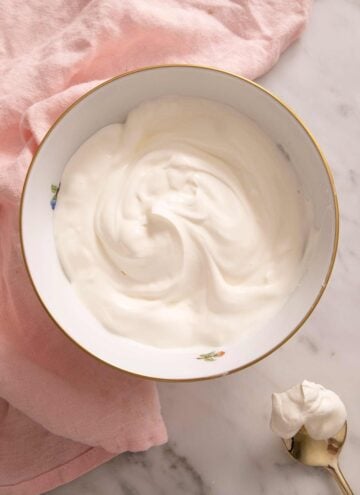


Leave a Reply